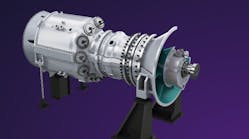Oil and Gas giants collaborating on planned Carbon-Capture, H2 Hub in three U.S. states
Three historically fossil fuel-powered firms will work together on a cleaner energy hub in the heart of Appalachia.
United States Steel Corp., Shell US Gas & Power and Equinor US Holdings Inc. entered in an agreement to collaborate on a hub and infrastructure featuring carbon capture utilization and storage (CCUS) and hydrogen production and use. In essence, the work would take carbon intensive processes and decarbonize them in the Ohio, West Virginia and Pennsylvania region.
To support its development, Equinor and Shell will jointly apply for US Department of Energy funding designated for the creation of regional clean energy hubs.
U. S. Steel is still evaluating its future role in the collaboration. The steelmaker earlier this year announced part of this type of decarbonization work in Appalachia, with additional partners including GE Gas Power, Marathon Petroleum and Mitsubishi Power.
“Establishing a low carbon hub in this region could have a profound impact on both the climate and the economy, creating sustainable jobs that will support families for many years to come,” says Grete Tveit, SVP Equinor Low Carbon Solutions. “For 14 years we have been engaged and investing in this region, and our significant equity gas production in the Appalachia region has proved to be an important low carbon asset in our portfolio. In collaboration with partners and the local community, we’re proud to advance this initiative and America’s net zero future.”
The region’s strong industrial and manufacturing activity could offer a strong use case for decarbonization tools while still utilizing traditional resources. Hydrogen itself does not emit carbon dioxide, but to be truly carbon-free or “green” it must be created via electrolysers powered by clean energy resources such as wind, solar, hydro or nuclear.
A form of H2 decarbonization, called blue hydrogen, creates it by the traditional, carbon-intensive method of steam methane reforming, while carbon capture technologies are then employed to reduce the environmental footprint of the project.
Read more of EnergyTech's extensive coverage in a future Hydrogen sector
Subscribe to our free, tri-weekly newsletter for more Insights into the C&I Energy Transition
Pittsburgh-based U.S. Steel has global operations but has significant manufacturing facilities in Pennsylvania, Michigan, Indiana, Alabama and Canada. The company has achieved raw steel making capacity of about 26 million net tons annually, according to its reports.
“U. S. Steel is investing significant resources to achieve the sustainability goals in our Best for All strategy, and we know we cannot do it all alone. Successfully addressing the climate crisis requires public and private collaborations,” says Richard L. Fruehauf, U. S. Steel’s Chief Strategy & Sustainability Officer. “We cannot —and will not —stand still, and this agreement is another effort to advance profitable, sustainable steel solutions for people and the planet.”
The global oil and gas producer Shell, based in Britain, produced an average of 1.9 million barrels of oil equivalent per day in the second quarter, according to its earning report.
Equinor is a Norwegian global energy company whose oil and gas exploration and production unit achieved increased volumes in the second quarter. The company’s renewables segment also grew 15 percent, according to the report.
-- -- --
(Rod Walton, senior editor for EnergyTech, is a 14-year veteran of covering the energy industry both as a newspaper and trade journalist. He can be reached at [email protected]).





